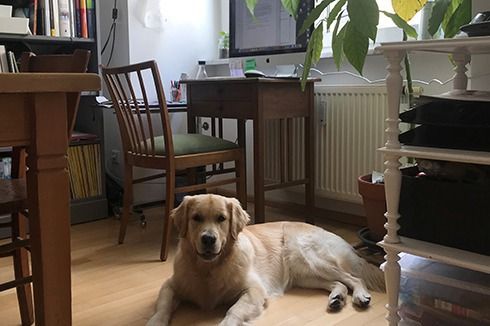Is your home becoming a home office?
The rights of the family change in a home that is shared with a work-from-home (WFH) employee.
Residz Team 2 min read

There is really only one room in our house where the morning sun streams in. It’s supposed to be a communal, family living area but sometime in the last six months it became my husband’s home office.
He’s placed his desk and wide screen monitor slap bang in the middle of this delightful room with its view over the street. This morning I found myself wondering… is our home a home any longer, or is it a home office?
I ask this because the rights of the family change in a home that is shared with a work-from-home (WFH) employee. Am I right? Witness those family members not working who must tiptoe around their own home like cows trained to avoid virtual fences.
I’m not just the victim, I’m the culprit too. I usually set up my laptop at the dining table and can shush passers-by when I’m on a Zoom or Teams video conference call. I’ve been known to post signs up “SILENCE from 11-12.30 pm!” and glare at those who cough or boil a kettle.
As well, the remote worker is home but not ‘at home.’ Like a robotic vacuum cleaner, the remote worker appears alive and present (moving about the room and making occasional noises) but is unavailable for a chat, to laugh at a funny story, or to squeeze into a tight corner in search of dog hair.
In essence, the WFH employee has a body in the home, but a mind in the office. When the remote worker is in ‘work mode’ the whole family must tilt in that direction and adjust their own movements.
Recent data out of the U.S. shows that 25% of all professional jobs will be remote by the end of 2022, with opportunities to work remotely increasing through 2023. (Forbes) If Australian stats are similar, up to 1 in 4 households will have homes that are doubling as home offices with all the attendant minor adjustments that come with it.
With the Great Resignation and more kids staying in their parents’ home into their 30s, this represents a major disruption to our concept of ‘home.’ Once somewhere reserved for domestic duties, relaxation, and entertainment, home is now a workplace and lifestyle resort too.
Of course, there are plenty of benefits of WFH or remote work. Just now I took the dogs around the neighbourhood so we all could get some sunshine, and I could get some eye-strain relief. It’s a win-win for the dogs and for me, and I felt grateful for the opportunity. WFH parents with young children value more time with their kids, and digital nomads see it as a chance to travel.
Just under 100% of employees do want some form of remote work. FlexJobs' 10th Annual Survey (conducted between July and August 2021) showed 58% of respondents report wanting to be full-time remote employees post-pandemic, while 39% want a hybrid work environment.
But, this morning, when I saw the sun streaming into the one room that should be enjoyed by all the family, I felt something akin to the property blues and I had to say something. Upshot is, when hubby’s finished renovating a spare room (in between his conference calls and reviewing emails), we’ll both move in there.
Image: Daniel Zerlin in Bauwelt